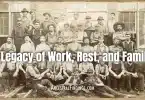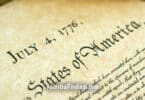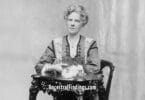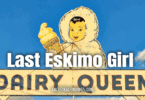Everyone loves a merry-go-round. They are fun for all ages, charming, enchanting, and wonderful reminders of our childhoods. At the same time, we can enjoy watching our children and grandchildren having fun on them. They are also one of the few carnival rides that we can enjoy riding with them. Merry-go-rounds are true family fun rides, suitable for and beloved by all ages.
It makes sense, then, with all the love that merry-go-rounds receive around the world, that there be a museum dedicated to them. There is one, located in Sandusky, Ohio. The Merry-Go-Round Museum opened up to serve the public in 1990, but the idea for it came about in 1988. This was when four merry go round-themed stamps were issued by the U.S. Post Office.
A man named Paul Calle from Stamford, Connecticut designed the first group of merry-go-round stamps and featured an animal from the Kiddieland Carousel at Cedar Point on it. A ceremony was held at the Sandusky amusement park for the first day the stamp set was issued.
Another group of stamps included a Gustav Dentzel deer designed in 1895, a Charles Looff goat and camel combination designed around 1880, and a King armored horse designed by Daniel Muller in 1925. The King horse is also from the Kiddieland Carousel at Cedar Point. In fact, the King horse is considered by many art aficionados as one of the rarest and gorgeous of the world’s carousel figures.
Because local carousel animals were being featured on some of the stamps, a group of people in Sandusky decided to celebrate it by making the first day of issue for the stamps special in the local area. The group borrowed the former Sandusky post office, which was vacant, and put together a delightful display of carousels celebrating the Kiddieland carousel animals, as well as other famous carousel figures.
When the local group put on the display, they hoped to get a few hundred visitors to it. Instead, more than two thousand people came, and not just from the local area. Visitors arrived from all over the nation to enjoy and appreciate the carousel display. Because the display was so popular, a non-profit organization was eventually formed around it, with the stated mission to “preserve and promote the art and history of the carousel.”
The new non-profit was able to purchase the vacant post office, which was an excellent choice, as it was already on the National Register of Historic Places, making it a perfect location for a museum. In fact, preserving this historic building became part of the mission of the non-profit, in addition to promoting appreciation for the art and history of merry-go-rounds. Once the non-profit received its official non-profit status, it began fundraising to promote its causes with the public.
Today, the old post office is the Merry-Go-Round Museum of Sandusky, Ohio. It displays objects and artifacts that are meant to bring awareness to the public of the history of the carousel. Those in charge of the museum want the public to also come to have more knowledge and appreciation of the carousel. It is, after all, an art form unto itself, and a unique and beautiful one at that. You find artwork on carousels that you will not find anywhere else in the world. Making carousel figures is an art form, done by highly skilled and specialized artisans. Their work deserves to be commemorated. And, at the Merry-Go-Round Museum, it is.
In addition to merry go round displays at the museum, there is also a display of carving shop tools of some famous carousel figure designers. There is also a woodcarving shop where actual demonstrations of the art of carving carousel figures are performed. The museum has its own machine, too, which is a 1939 one from the Allan Herschell Corporation.
The Merry-Go-Round museum is always on the lookout for artifacts to add to its collection. It looks to amusement parks, traveling and fixed carnivals, and private collectors for these artifacts, and has a good amount of success in obtaining the things in which it is interested. It also accepts long and short-term loans of carnival and festival memorabilia, as well as antiques from the earliest points in the history of amusement parks, carnivals, and merry go rounds.
To raise money to fund its projects, the museum rents out parts of the building for parties and other events. Anyone from families to corporations can rent rooms at the museum for special occasions and celebrations. Volunteers are accepted to work admissions, to give tours, to work in the gift shop, and to give carousel figure carving demonstrations (and the museum provides those volunteers with carousel figure carving training).
The museum is also home to what is said to be the only haunted carousel horse in the world. It is typically referred to as Muller’s Military Horse and was made in 1917 by Daniel C. Muller. Muller was known to have a fascination with Civil War and pre-WWII era horses, which is why he made the horse. However, the horse is more famous for being haunted.
The legend goes that Muller’s wife fell in love with the horse at first sight. She loved it so much that she returned to ride it even after she crossed over. She doesn’t want anyone else to fall in love with the horse, so she goes out of her way to make sure no one can take pictures of it. While the horse the museum displays is a replica of Muller’s horse, guests often say they can hear Muller’s wife walking around the horse, usually at night, staying by its side as always, even though it is a replica.
The museum is closed in January, open only on weekends in February, and open from 10 am to 4 pm Monday through Saturday (and 12 pm to 4 pm Sunday) from Memorial Day to Labor Day. The rest of the year, it is open from 11 am to 4 pm Wednesday through Saturday and 12 pm to 4 pm on Sunday for those who want to enjoy its delights.






